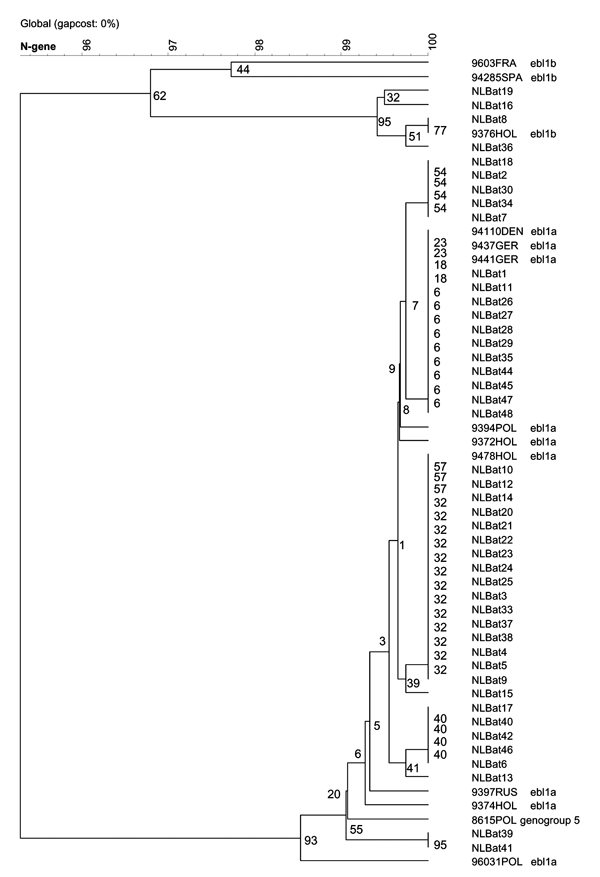Volume 11, Number 12—December 2005
Research
European Bat Lyssaviruses, the Netherlands
Figure 2

Figure 2. Phylogenetic tree of European bat lyssavirus (EBLV1) sequences detected in serotine bats in the Netherlands, 1997–2003, and historic EBLV sequences detected in bats in Europe. Tree calculated based on cluster analyses and global alignment similarities of 396 nucleotide fragments of the N-gene encoding region (position in the genome nucleotide 46–441, numbered according to the CVS strain, GenBank accession no. D42112). The confidence values of the internal nodes were calculated by performing 100 bootstrap analyses.
Page created: February 02, 2012
Page updated: February 02, 2012
Page reviewed: February 02, 2012
The conclusions, findings, and opinions expressed by authors contributing to this journal do not necessarily reflect the official position of the U.S. Department of Health and Human Services, the Public Health Service, the Centers for Disease Control and Prevention, or the authors' affiliated institutions. Use of trade names is for identification only and does not imply endorsement by any of the groups named above.